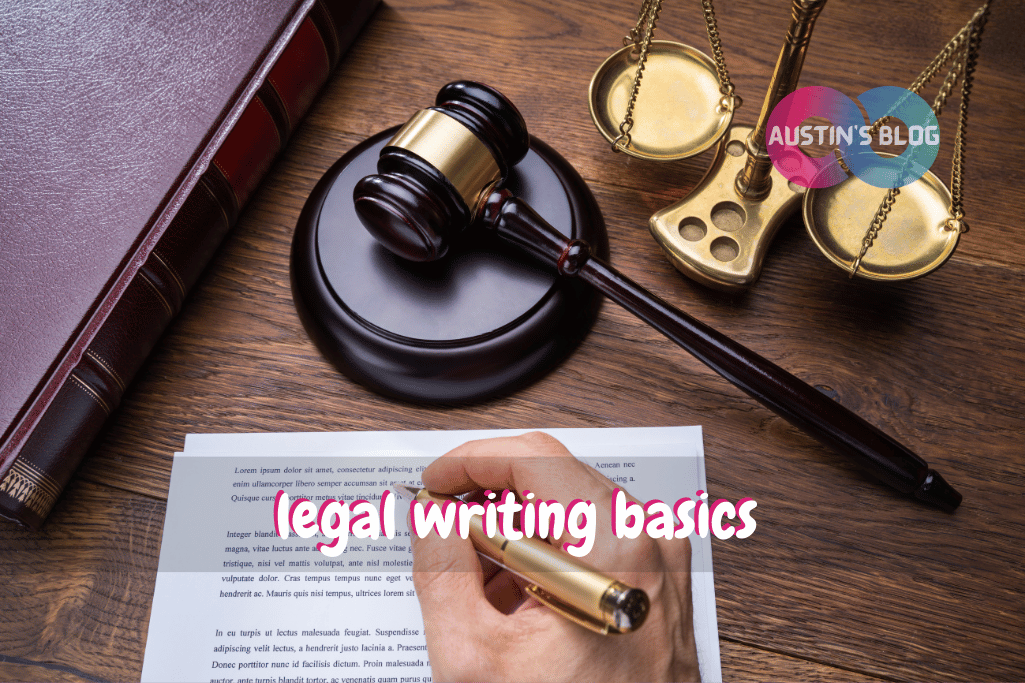Legal Writing 101: A Complete Guide for Beginners (2025)
Introduction
Did you know that a single misplaced comma in a legal document once cost a company $2.13 million in a contract dispute? [1]
Hey there! I’ve spent years consulting with experts who teach legal writing, and let me tell you, the basics can make or break your legal career.
Legal writing isn’t like other types of writing – it’s a whole different ball game.
When my partner and I first started reviewing briefs at a law school, we were amazed at how brilliant students struggled with putting their legal knowledge into clear, precise writing.
That’s exactly why I created this guide with her.
You see, whether you’re a law student, a new legal professional, or someone who needs to understand legal writing for work, mastering the basics is absolutely crucial.
In today’s fast-paced legal world, clear writing isn’t just nice to have – it’s essential.
In this guide, we’re going to walk through everything you need to know to get you started with legal writing basics.
From understanding the core principles to avoiding common pitfalls, I’ll share all the insights I’ve gained from years of experience.
Trust me, these are the things I wish someone had told me when I was starting out!
Understanding Legal Writing: Core Principles and Purpose
Let’s dive “head – first” into legal writing basics, and boy, do I wish someone had explained this to me clearly when I was starting out!
Legal writing is so much more than just throwing around fancy words and citing cases. It’s about communicating complex legal ideas in a way that your audience can understand and act upon.
I remember my first attempt at writing a legal memo. I thought I needed to sound as formal and complicated as possible. Wrong!
The partner reviewing my work simply wrote “What?” across the top in red pen. That was a wake-up call I’ll never forget.
The core principle of legal writing is actually pretty simple: clarity is king.
Whether you’re writing a contract, a brief, or a simple legal letter, your primary goal is to communicate clearly and precisely.
This isn’t the time for flowery language or showing off your vocabulary. Save that for your novel!
Different types of legal documents serve different purposes, and understanding this is crucial.
A contract needs to be precise and unambiguous.
A legal brief needs to be persuasive while sticking to the facts.
Client letters need to explain complex legal concepts in plain English.
I once had a client thank me profusely for explaining a complicated legal issue “like a real person” – that’s when I knew I was doing something right.
When it comes to audience, here’s a trick I learned the hard way: always consider who’s going to read your document.
Writing for a judge? They’re busy and appreciate concise, well-organized arguments.
Writing for a client? They might not know any legal terminology at all. I once sent a memo full of legal jargon to a client and got back a very confused phone call. Lesson learned!
Remember, legal writing isn’t about impressing people with your knowledge – it’s about communicating effectively.
Think of yourself as a translator, converting complex legal concepts into clear, actionable information. That’s what makes legal writing truly powerful.
Essential Elements of Legal Writing Style
When it comes to legal writing style, I learned some of my biggest lessons from my early mistakes.
Let me tell you about the time I submitted a brief that was so loaded with flowery language, the judge actually called it out in court!
Talk about a humbling experience. But it taught me what really matters in legal writing style.
First up, clarity and conciseness.
Listen, I get it – you want to sound smart. But here’s the thing: the smartest legal writing is the clearest.
I used to write sentences that went on for days, thinking it made me sound more professional.
Now I know better. Short, clear sentences win every time. One idea per sentence. Keep it simple.
The formal tone thing is tricky to nail down.
You don’t want to sound like you’re texting your friend, but you also don’t want to sound like you swallowed a law dictionary.
I’ve found a sweet spot: professional but accessible. Think of it like wearing a suit to court – you want to look professional, but you still need to be able to move around comfortably.
Here’s a game-changer that transformed my legal writing: active voice.
“The contract was breached by the defendant” sounds wishy-washy. “The defendant breached the contract” – now that’s clear and direct.
I make my students play a game: highlight every “was” and “were” in their writing. If they can rewrite the sentence in active voice, they have to do it.
Word choice is crucial in legal writing.
I once used the word “arguably” in a contract, and oh boy, did that cause problems! Every word needs to mean exactly what you intend it to mean – no more, no less.
I keep a list of precise legal terms on my desk, but I only use them when they’re absolutely necessary. No need to say “pursuant to” when “under” works just fine.
And let’s talk about legal terminology basics.
Yes, some legal terms are necessary. But I’ve seen too many writers throw around Latin phrases just to sound smart.
Unless “res ipsa loquitur” is actually relevant to your argument, leave it out.
Plain English is your friend. I always tell my students: if you can’t explain it to your grandmother, you need to simplify it.
Basic Legal Writing Formats and Structure
Alright, let’s get into the nuts and bolts of legal writing structure. Remember that first legal memo I mentioned earlier?
Well, it was a mess because I didn’t understand the importance of proper format.
Now I know better, and I’m going to share what I’ve learned about keeping legal documents organized and effective.
The IRAC method is your best friend in legal writing. Issue, Rule, Analysis, Conclusion – it’s like a recipe for clear legal analysis.
I remember struggling with this format until a mentor gave me a brilliant tip: think of it like building a house.
The Issue is your foundation, the Rule is your framework, the Analysis is where you build your walls, and the Conclusion is putting the roof on top.
Everything has to connect logically.
When it comes to paragraph structure, here’s something I wish I’d known earlier: each paragraph should focus on one main point.
I used to cram multiple ideas into single paragraphs, thinking I was being efficient. Wrong!
It just confused readers. Now I follow what I call the “one idea, one paragraph” rule.
Makes a world of difference in readability.
Citations – oh boy, let me tell you about citations. I once spent three hours fixing citations in a brief because I didn’t follow a consistent format from the start.
Learn from my mistake: pick your citation style (usually Bluebook for legal writing) and stick to it religiously.
I keep a citation cheat sheet next to my computer at all times.
Document formatting standards might seem boring, but they’re incredibly important.
Proper margins, consistent font, clear headings – these things matter more than you might think. I once had a judge reject a brief because it didn’t meet the court’s formatting requirements.
Talk about a tough lesson! Now I always check the specific formatting requirements before I start writing.
Common Legal Writing Mistakes to Avoid
Let me share some war stories about common legal writing mistakes – trust me, I’ve seen them all (and made quite a few myself!).
These are the pitfalls that can turn a good legal document into a confusing mess.
Ambiguous language and wordiness are the enemies of good legal writing. I once reviewed a contract that used the phrase “reasonable time frame” without defining it.
Guess what happened? Yep, a dispute over what “reasonable” meant. Now I’m almost obsessive about being specific.
Instead of “soon” or “reasonable,” I use actual deadlines. Instead of “various documents,” I list exactly which documents.
Poor organization is like serving someone a sandwich with the ingredients scattered all over the plate.
I had a student who wrote a brilliant analysis, but it was so poorly organized that the arguments lost all their impact.
The solution? Always create an outline before you start writing. I spend about 20% of my writing time just planning the structure. It saves hours of reorganizing later.
Citation Errors
Let’s talk about citation errors because they’re more serious than most people realize.
I once saw a case lost partly because the attorney cited an overturned case law. Ouch!
Double-check every single citation.
Make sure your cases are still good law. And please, please make sure you’re citing the right page numbers.
I use citation management tools now, but I still verify everything manually.
Grammar and Punctuation Errors
Grammar and punctuation errors can change the entire meaning of a legal document.
Remember that million-dollar comma case I mentioned earlier? Yeah, that really happened.
I keep a style guide on my desk and use grammar checking tools, but nothing beats having another set of eyes review your work.
I still have colleagues proofread my important documents, and I do the same for them.
Inconsistent formatting might seem like a minor issue, but it can make your document look unprofessional and be harder to read.
I create a formatting template for each type of document I regularly write.
Fonts, spacing, headings, margins – everything is standardized. It saves time and ensures consistency.
Tools and Resources for Legal Writers
Alright, let’s talk about the tools that can make your legal writing life easier. When I first started, I did everything the hard way.
Now I know better, and I’m going to share my favorite resources that help me write more effectively and efficiently.
Style Guides and References
Style guides and reference materials are my constant companions. The Bluebook might be intimidating at first (I used to call it the “blue monster”), but it’s indispensable.
I also swear by Garner’s Legal Writing in Plain English.
These aren’t just reference books – they’re investments in your legal writing career.
I’ve literally worn out three copies of the Bluebook over the years!
Legal writing software and tools have come a long way. I use tools like WordRake to help eliminate wordiness, and PerfectIt for consistency checking.
But here’s a word of caution: these are aids, not replacements for good writing skills.
I once relied too heavily on grammar checking software and missed some context-specific errors.
Now I use these tools as a second line of defense, not a primary solution.
Research resources are crucial for solid legal writing. Westlaw, LexisNexis, and other legal databases are worth their weight in gold.
I remember trying to do legal research with just books when I first started – took forever! Now I can find relevant cases and statutes in minutes.
But remember to verify everything. I once found an “updated” statute on a free website that was actually two years out of date.
When it comes to proofreading techniques, I’ve developed a system that works wonders. First, I read the document out loud (yes, really!).
Then I print it and read it backward, paragraph by paragraph. Sounds weird, but it helps you focus on the actual words rather than getting caught up in the flow.
Finally, I use a checklist to verify all formatting, citations, and key elements are correct.
Conclusion
Whew! We’ve covered a lot of ground in this guide to legal writing basics.
From understanding the core principles to avoiding common pitfalls, you now have a solid foundation for developing your legal writing skills.
Remember, becoming a great legal writer isn’t about being perfect from day one – it’s about continuous improvement and learning from your mistakes.
The key principles we’ve discussed – clarity, precision, proper structure, and attention to detail – aren’t just academic concepts.
They’re practical tools that will serve you well throughout your legal career. I’ve seen countless writers transform their work by applying these basics consistently.
Keep practicing these fundamentals. Start with small documents and work your way up to more complex ones.
Use the tools and resources we discussed, but don’t rely on them exclusively. And most importantly, don’t be afraid to ask for feedback. Even after years of teaching and writing, I still learn something new all the time.
I’d love to hear about your experiences with legal writing. What challenges have you faced? What techniques work best for you?
Drop a comment below and let’s continue the conversation.
Remember, every expert legal writer started as a beginner, and with these fundamentals, you’re well on your way to mastering the craft of legal writing.
Keep writing, keep learning, and don’t forget – clarity always wins!
Frequently Asked Questions: Legal Writing Basics
Q: What are some essential legal writing tips to help improve your legal writing skills?
A: Essential legal writing tips include understanding your audience, organizing your thoughts clearly, using precise language, avoiding passive voice, and ensuring your arguments are well-supported by relevant legal precedent.
Proofreading your work product is also crucial to maintain professionalism and clarity.
Q: How can I improve my legal writing through the writing process?
A: To improve your legal writing, follow a structured writing process that includes thorough legal research, drafting, revising, and editing.
Taking time away from what you’ve written can provide a fresh perspective, allowing you to identify areas for improvement more effectively.
Q: What role does legal research play in persuasive legal writing?
A: Legal research is fundamental in persuasive legal writing as it provides the foundation for constructing sound legal arguments.
It involves identifying relevant legal authorities and precedents that support your position, thereby enhancing the credibility and persuasiveness of your document.
Q: How can I make my legal brief more persuasive?
A: To make your legal brief more persuasive, focus on clarity and conciseness, use logical structuring, and ensure your arguments are backed by strong legal precedent.
Additionally, employing persuasive writing techniques, such as emphasizing the strengths of your case and addressing counterarguments, can enhance the effectiveness of your brief.
Q: What are some common mistakes to avoid in the legal writing process?
A: Common mistakes in the legal writing process include failing to adequately research and write, using overly complex language, neglecting to proofread, and not tailoring the document to the intended audience.
Avoiding these pitfalls can significantly improve your writing.
Q: How can a legal writing coach at Schiff Hardin assist in improving your writing?
A: A legal writing coach at Schiff Hardin can provide personalized guidance on legal writing, offering tips from the pros to refine your writing techniques, enhance clarity, and ensure your legal arguments are compelling and well-structured.
Q: What are the basic rules of effective legal writing?
A: Basic rules of effective legal writing include clarity, conciseness, logical organization, and accuracy.
It is important to use precise language, avoid unnecessary jargon, and ensure that your legal arguments are well-supported by relevant legal authorities.
Q: How does the college of law contribute to developing legal writing skills?
A: The college of law contributes to developing legal writing skills by offering courses and workshops focused on legal research and writing.
These programs provide students with the opportunity to practice drafting legal documents, receive feedback, and learn from experienced professors of legal writing.
Q: Why is it important to proofread your legal documents?
A: Proofreading your legal documents is crucial to ensure accuracy, professionalism, and clarity.
It helps identify and correct errors, improve the overall quality of the document, and ensure that your legal arguments are presented effectively.






